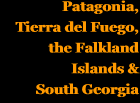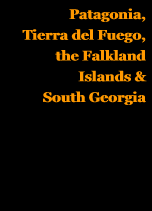Building the route
Once the Dirección de Obras Publicas had made the decision to go ahead and construct the line tenders were invited and the main contract awarded to Lezaeta Duran y Hermanos.
The cover of the main contract document, now in the Biblioteca Nacional, which specifies in precise detail the quantities of cut and fill, the details of all curves, and many other details necessary for the calculation of tenders.
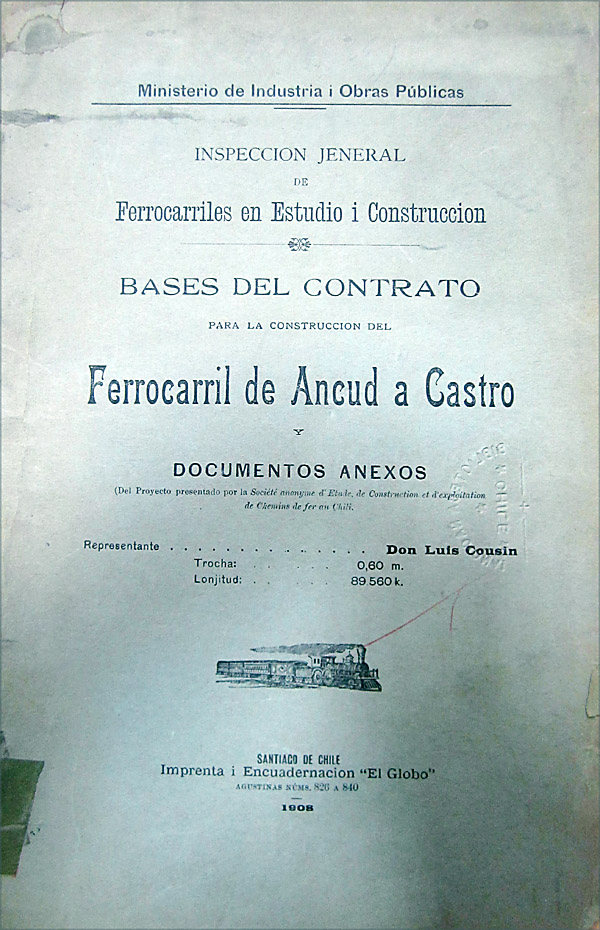
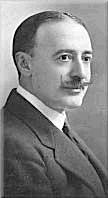 Señor Ronald Holmes, the great grandson of Señor Eleazar Lezaeta, has very kindly sent copies of a number of photographs from his great grandfather's family albums. Señor Lezaeta was the engineer for the construction of the line and a partner in the contractors Lezaeta Duran y Hermanos who did the work. Señor Ronald Holmes, the great grandson of Señor Eleazar Lezaeta, has very kindly sent copies of a number of photographs from his great grandfather's family albums. Señor Lezaeta was the engineer for the construction of the line and a partner in the contractors Lezaeta Duran y Hermanos who did the work.
Señor Eleazar Lezaeta, the engineer of the Ancud-Castro railway.
The photos can be divided into three groups:
• First, a single picture showing work on the excavation of the roadbed through a cutting.
• Second, five pictures showing viaducts along the line in course of construction or after completion.
• Finally, three pictures taken in the main street of Ancud during the latter part of the works.
1 Earthworks along the route
Temporary track, with a single bladed point, has been laid through a newly excavated cutting. At least two horses or mules can be seen, and there is a skip wagon in the distance.
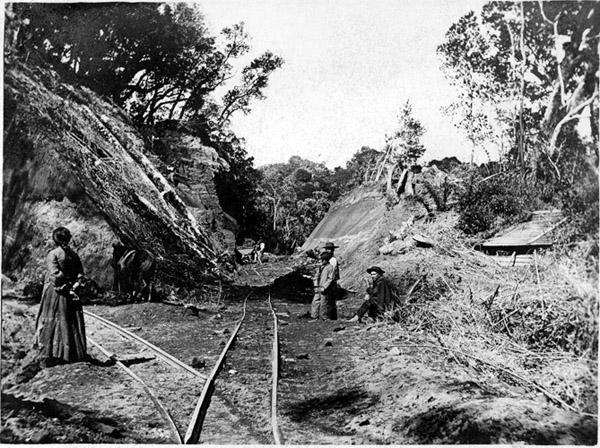
2A Pile driving for the San Antonio bridge
The San Antonio bridge over the río Pudeto lies just south of Ancud, and was the only such bridge over a wide marshy estuary. In the photo temporary staging has been erected on both sides of the river and piling rigs erected to drive the permanent piles into the mud. The steam in the far distance might mean that the rigs were steam powered, but how could the power have been transmitted to the nearer side of the river? On the left the first two permanent timber spans are being erected.
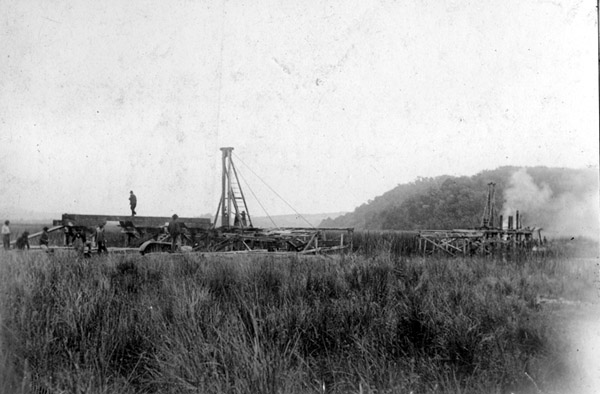
2B Pile driving for the San Antonio bridge
Another photo of the same works, taken a day or two later. A third piling rig has arrived, and some of the temporary staging has slipped a little, but there are still only two permanent spans to be seen.
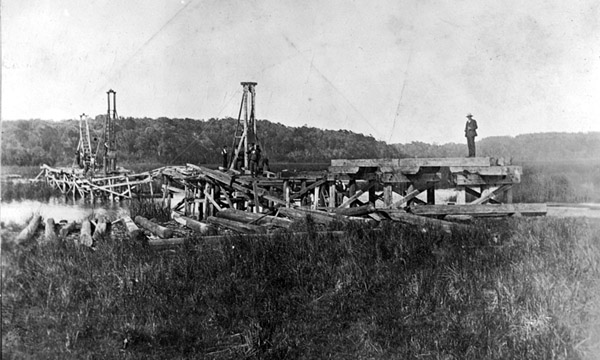
2C A river bridge under construction
This might have been at Puntra or Butalcura. At either place the line had to cross one of the east-west flowing rivers just north of the station. It can be seen that the bridge is made up of four parallel beams for each span - inner ones under the rails and outer ones at the end of the sleepers.
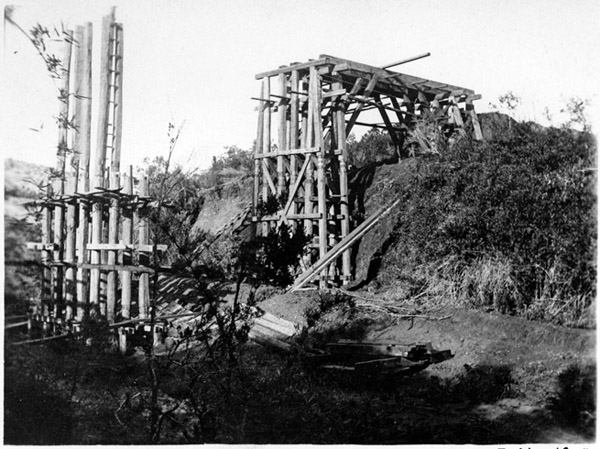
2D A viaduct after completion
This structure is rather higher than the previous one and seems to have been built between new embankments still bare of vegetation. The construction methods are similar however, but low level struts have been added to stiffen the piers and diagonal bracing in turn keeps those struts horizontal. This is likely to have been towards one end of the route, either near Ancud or down near Castro.
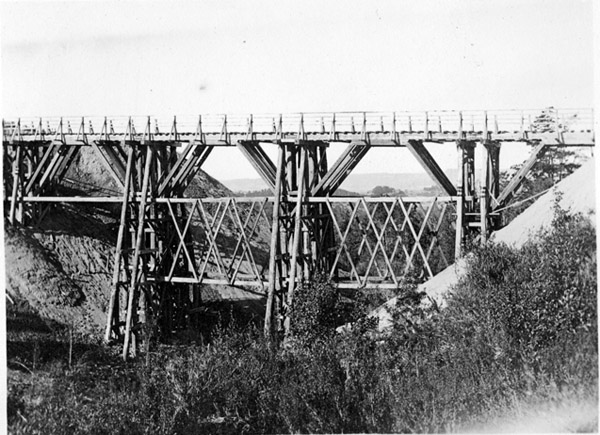
2E An inspection train on a viaduct
The location is unknown but might well be the viaduct in the previous picture. The gentlemen by the loco include Señor Lezaeta furthest right. Presumably the others might include one or more of the Duran brothers or perhaps the state railways' clerk of works. The locomotive is a 40HP Jung:which creates a puzzle, for the railway's own large 0-6-0T and smaller 50HP 0-4-0T Jungs were not delivered until late 1912. Possibly this one belonged to the contractors, though it appears to be in fairly good condition.
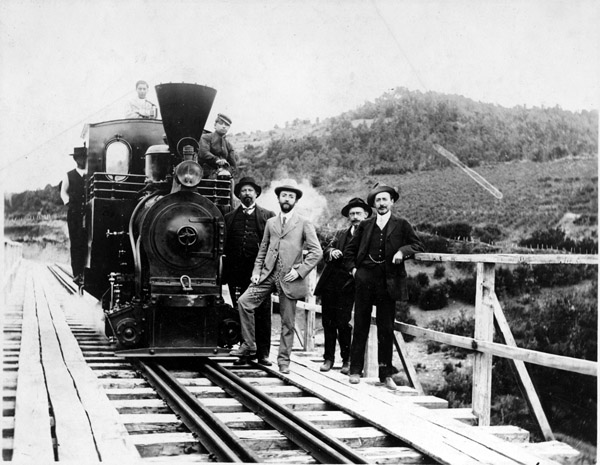
3A Tracks in the street in Ancud
Two tracks run across the picture, down the main street in Ancud. The photo was taken looking west, and seems to show amongst other things the tower of the main church in the background. This was eventually destroyed in the 1960 earthquake.
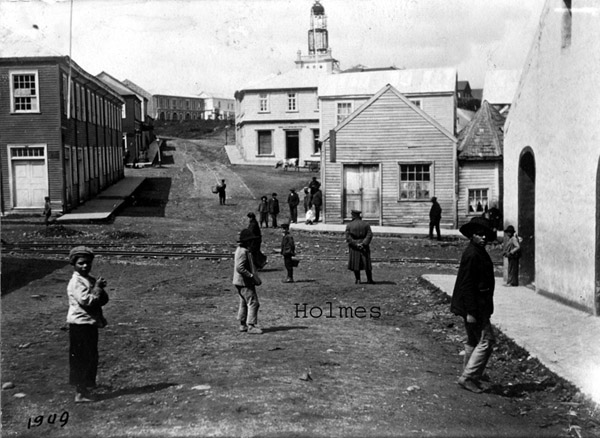
3B A trial trip through Ancud
This photo looks east along Calle Prat in Ancud. The track has been laid straight on top of the road surface. Whilst this might be a temporary arrangement, a coloured postcard on the previous page also shows the track thus. The train in the background appears to consist of one or two contractors' wagons with an impromptu load of passengers. It is shown more clearly in the final picture below.
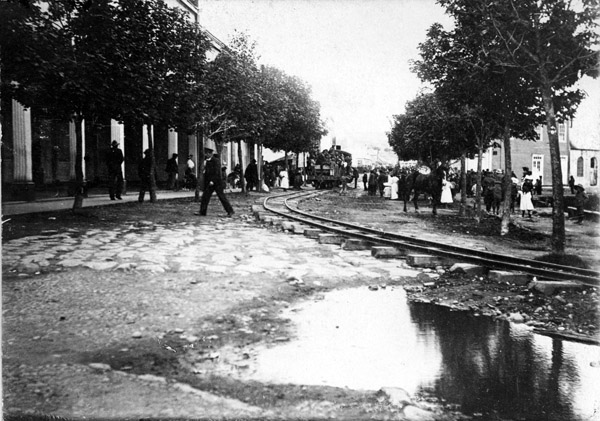
3C Another view of the trial trip
Whilst there is a crowd on the wagon and in the street, there are no signs of formality or celebration. This makes it likely that this was the occasion of a trial run rather than a formal opening. The picture was again taken in Calle Prat in Ancud, withthe loco facing east. The wagon belongs to the contractors, Messrs. Lezaeta y Duran Hermanos, and the loco appears to be one of the two Davenport 0-6-2Ts that they ordered and which eventually were passed to the FC del Estados for use on the completed railway.
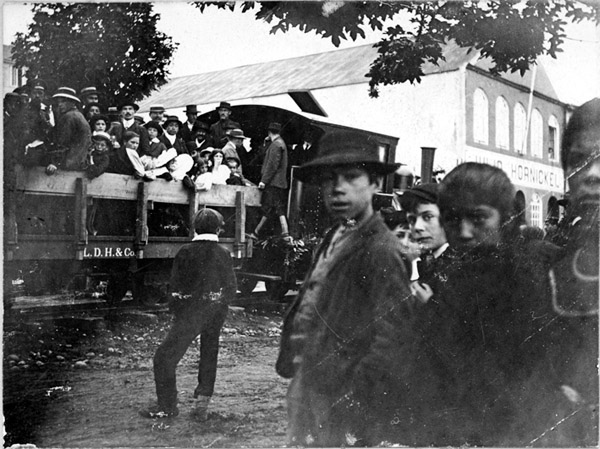
27-8-11
|
